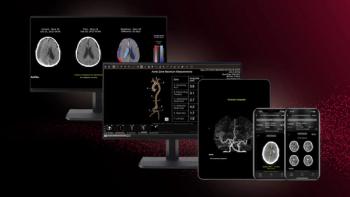Image quality of aortic CT angiography (CTA) is maintained when a weight-based protocol incorporating tube potential selection is used to select lower iodine contrast volumes, according to a study published in the American Journal of Roentgenology. Researchers from the Mayo Clinic in Rochester, Minn., undertook a study to determine whether image quality was maintained with aortic CTA when performed with this protocol. The researchers evaluated results from 50 low-iodine CTA examinations, 36 internal control CTA examinations, and 50 size-matched control CTA examinations All examinations were evaluated in separate reading sessions conducted by three blinded vascular radiologists. Side-by-side unblinded comparison of the examinations was also performed. Aortic attenuation and the contrast-to-noise ratio were measured. The results showed contrast volumes were 63 percent lower when the protocol based on tube potential and patient weight was used (mean contrast volume, 49 mL for low-iodine CTA versus 133 mL for internal control CTA and 138 mL for size-matched control CTA). The mean volume CT dose index was 15.1 mGy for low-iodine CTA versus 18.8 mGy for internal control CTA, and 15.3 mGy for low-iodine CTA versus 17.1 mGy for size-matched control CTA. Of the image quality and diagnostic confidence evaluations for low-iodine CTA examinations, over 97 percent had acceptable image quality and diagnostic confidence for blinded (50/50) and unblinded (35/36) comparisons. Aortic attenuation was similar between groups. The researchers concluded that a weight-based protocol that incorporates tube potential selection allows the use of substantially lower volumes of iodinated contrast material in aortic CTA while maintaining acceptable image quality.





























